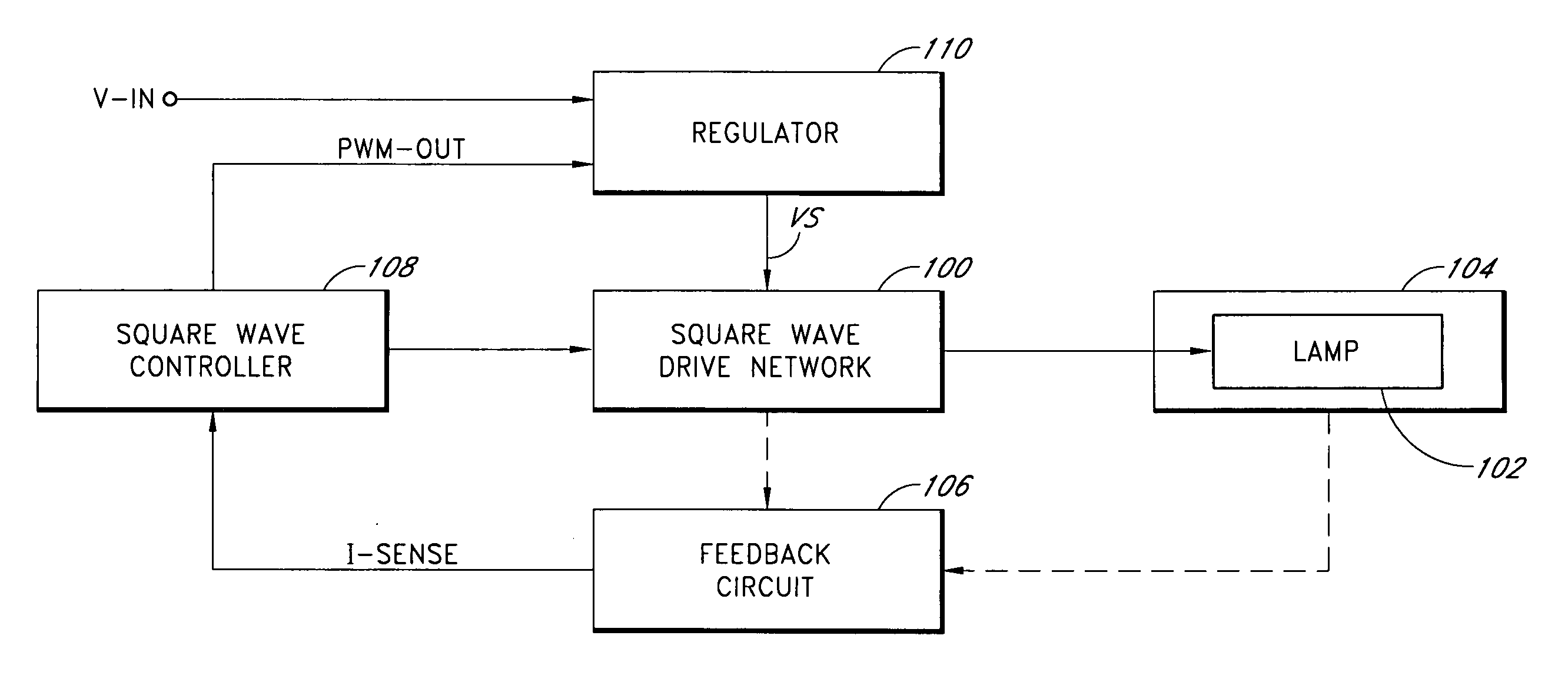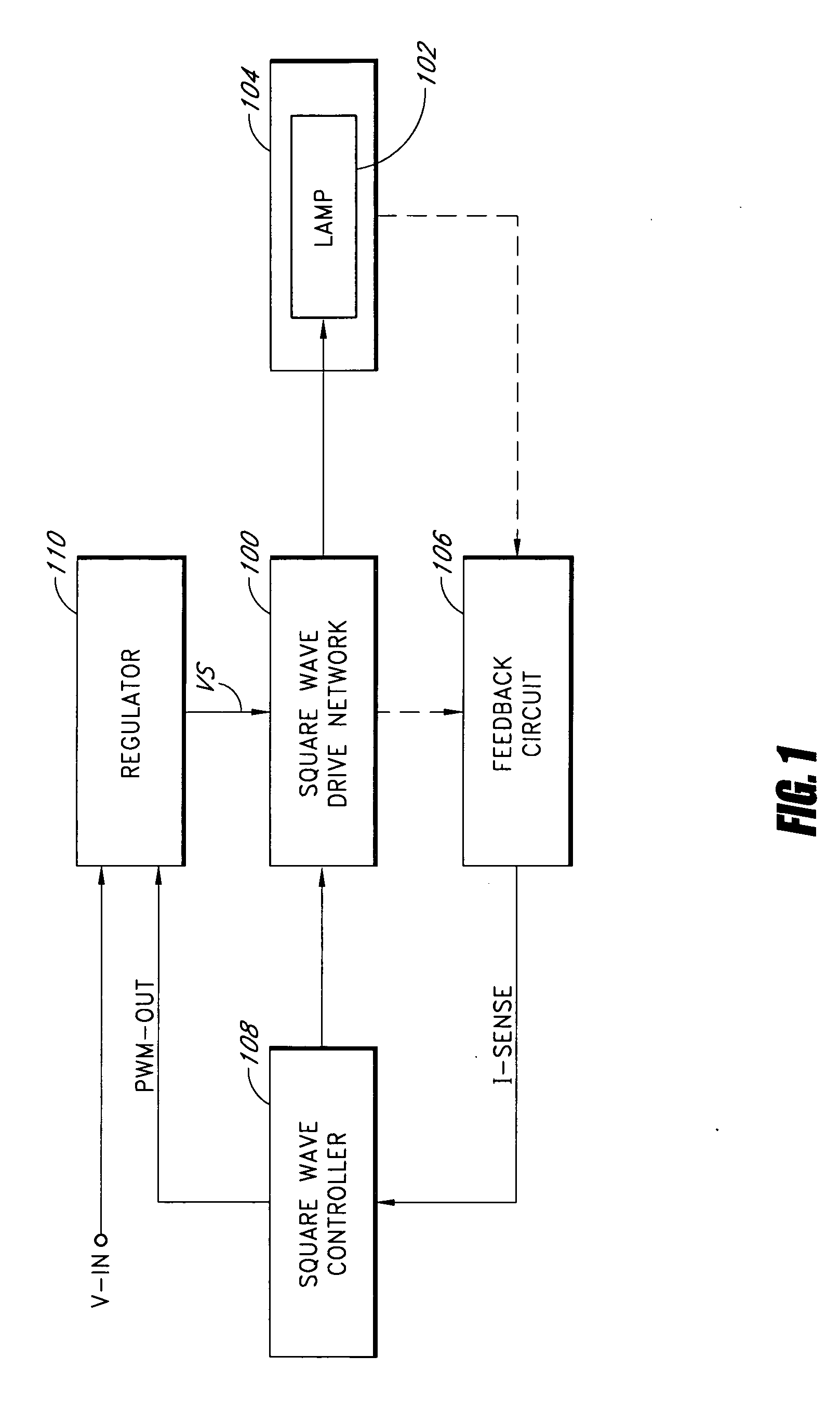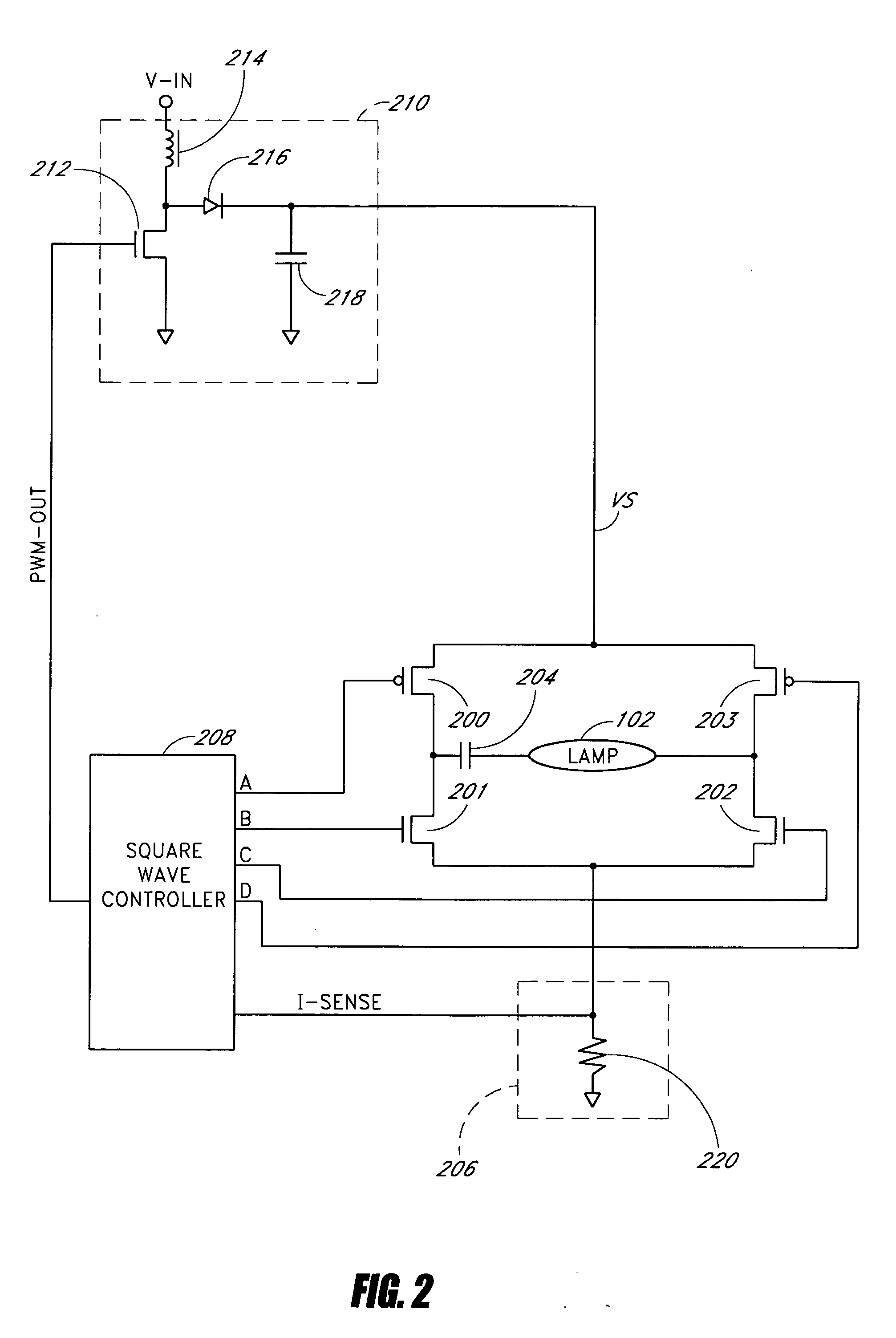Square wave drive system
a drive system and square wave technology, applied in the direction of instruments, light sources, electrical equipment, etc., can solve the problem of limited power required to generate ligh
- Summary
- Abstract
- Description
- Claims
- Application Information
AI Technical Summary
Benefits of technology
Problems solved by technology
Method used
Image
Examples
Embodiment Construction
[0027] Embodiments of the present invention will be described hereinafter with reference to the drawings. FIG. 1 is a block diagram of a power conversion circuit (or a lamp inverter) according to one embodiment of the present invention. The power conversion circuit converts a substantially DC input voltage (V-IN) into a substantially square wave output voltage to drive a fluorescent lamp (e.g., a cold cathode fluorescent lamp (CCFL) or a hot cathode fluorescent lamp (HCFL)) 102. A lamp current flows through the fluorescent lamp 102 to provide illumination in an electronic device 104, such as, for example, a flat panel display, a notebook computer, a personal digital assistant, a hand held computer, a liquid crystal display television, a scanner, a facsimile machine, a copier, or the like.
[0028] The power conversion circuit includes a regulator 110, a square wave controller 108, a square wave drive network 100, and a feedback circuit 106. The regulator (or the input stage voltage re...
PUM
 Login to View More
Login to View More Abstract
Description
Claims
Application Information
 Login to View More
Login to View More - R&D
- Intellectual Property
- Life Sciences
- Materials
- Tech Scout
- Unparalleled Data Quality
- Higher Quality Content
- 60% Fewer Hallucinations
Browse by: Latest US Patents, China's latest patents, Technical Efficacy Thesaurus, Application Domain, Technology Topic, Popular Technical Reports.
© 2025 PatSnap. All rights reserved.Legal|Privacy policy|Modern Slavery Act Transparency Statement|Sitemap|About US| Contact US: help@patsnap.com



